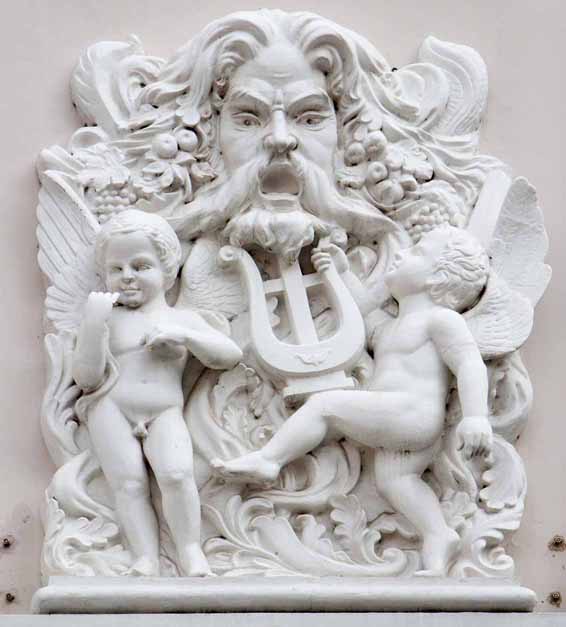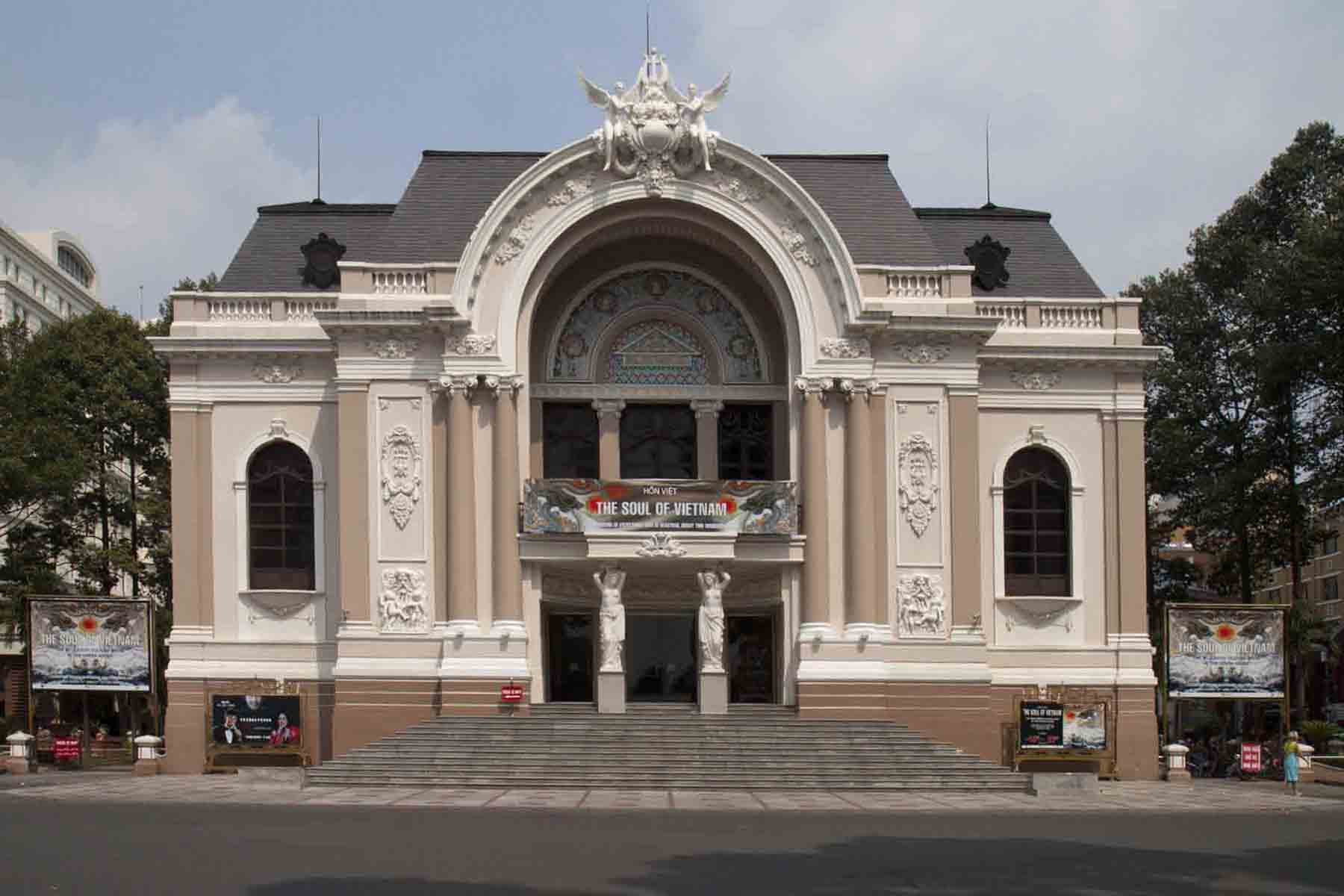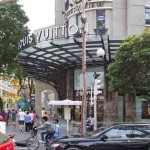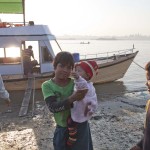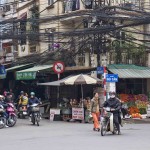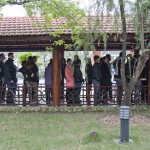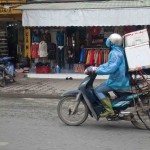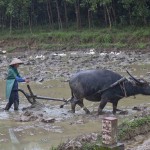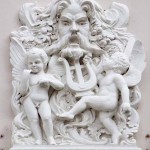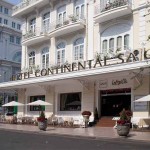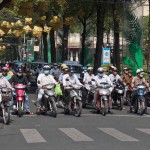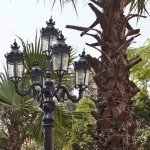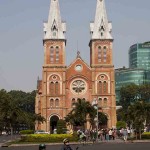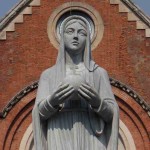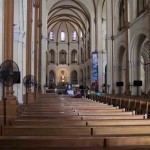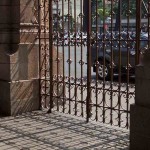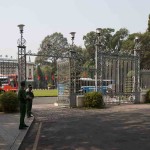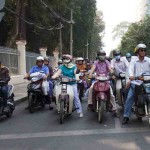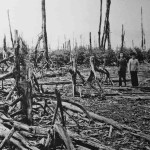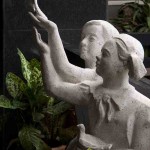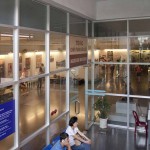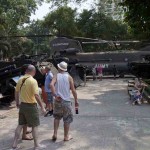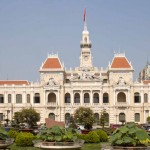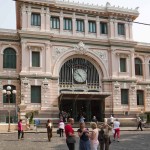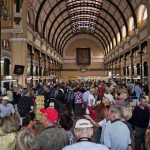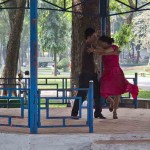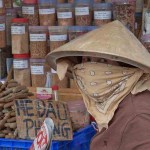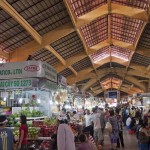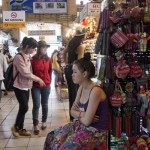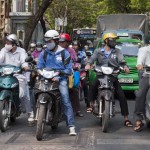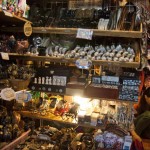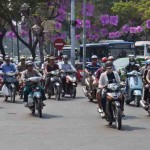Having already stayed at The Caravelle for two separate nights flitting in and out of Saigon, this was truly our first opportunity to explore the pulsating city. The Caravelle itself was of interest to us, as a favourite of the Western journalists covering the war, with the Terrace and Rooftop Bars being the perfect places to draft reports while knocking one back. When it opened in 1959, it was the tallest building in Saigon (at 10 floors!), and everyone was in awe of its airconditioning and bullet-proof glass!
Having mastered our road crossing techniques (vital in this country!), we put them to excellent use and explored the city on foot…or District 1, at least. Since the Municipal Theatre (Saigon Opera House) is just across from The Caravelle, we began our improvised tour there. Unfortunately, no tours inside the building are available, and we were unable to even check out the foyer – a tad disappointing. We could only admire her beauty from the outside, not from within, and she’s gorgeous!
From there we wandered leisurely past the white wrought iron balconied Hotel Continental – another famous spot, oozing history as well as charm. The hotel was a central figure in the social and political life of Saigon in the French Colonial Era. Graham Greene lived here when he was writing his novel, The Quiet American – and the Continental has a staring role! The French Colonial architecture and the al fresco café make it a pleasant spot to soak up the morning rays and indulge in some people watching.
We continued our self-devised tour program walking past the former Hotel de Ville (built in 1902-08), an ostentatious, frothy piece of European architecture somewhat at odds with the Saigon environs. The building now houses the People’s Committee, and there is a statue of a benevolent Uncle Ho, complete with child in arms, opposite the entrance in the tiny park. Unfortunately, this government building is also not open to visitors.
Notre Dame Cathedral is more impressive than you might first think, mainly due to its façade – from a distance, this late 19th century cathedral looks to be made of red bricks, when in fact, it is made from locally quarried stone that has been completely covered with red ceramic tiles imported from Marseille. The serene statue of the Virgin Mary at the front of the cathedral was made in Rome and brought to the war-torn country in 1959 in the hope of bringing peace with her. Apparently, locals swear they have seen the statue shedding tears – peace was a long time in coming…
Across the road from the Cathedral is the General Post Office – a palatial French Colonial building, designed by architect Gustav Eiffel, standing unchanged since it was built in the 1880s. Its foyer is more like the nave of a…well, cathedral, and there is much more ‘oohing’ and ‘ahhing’ going on inside this classic building than in the place of worship across the road! As you can see by the photos – there was a huge difference in the crowds, too! This could be due to the fact that a portrait of Uncle Ho dominates this foyer, and the flocking visitors are there to gawk at him; a bigger draw card than Jesus with the Vietnamese.
The Reunification Hall stands in all its 1960s glory (looking exactly like a city library), on spacious grounds only a few blocks from the GPO. The original building, the Norodom Palace, was the former residence of the French Governor General (in the 19th century), but was later occupied by South Vietnam’s President, Ngo Diem, and renamed the Presidential Palace. The original building was destroyed in 1962 in a failed assassination attempt – the target was Diem and, ironically, the hit was made by members of his own air force! The rebuilding was fairly swift, but not swift enough – Diem was killed before he could move in! This building was the site of the defining moment of the fall of Saigon and the South in the war – tanks stormed the gates on 30 April 1975, and these days, two tanks stand in the grounds as reminders.
I found visiting the War Remnants Museum a very harrowing experience. While it’s not for the faint-hearted, I do recommend a visit. I am glad I summoned the courage and forced myself to see the very real and confronting evidence of the brutal atrocities committed in that period, and my knowledge of this war has grown exponentially after this visit to Vietnam. The journalists’ photographs were like blows to the gut, and several times I had to rest on one of the many benches provided on each floor’s landing outside these bleak galleries, focusing on breathing and swallowing the tears that kept threatening to spill. These benches were well placed and rarely empty. Catching the eye of another woman sitting near me, and sharing our distress with silent acknowledgement and mutual gratitude that we hadn’t lived these lives, was comforting. After a pause, I continued into the next room to be faced with the devastating consequences of chemical warfare. The deformed foetuses preserved in formaldehyde are not the only evidence of this barbaric innovation – there is also the everyday fact of the twisted and shrunken bodies of beggars in the modern bustle of Ho Chi Minh City.
We ambled back towards our hotel late morning via the Ben Thanh Markets, one of the most recognisable landmarks of the city. It was built in 1914, by the French who named it Les Halles Centrales, and its domed clock tower dominates the neighbourhood. Home to several hundred shopkeepers, you can buy everything from tacky souvenirs to household goods and livestock! (Although, not many bargains are to be had here these days – haggling is not really a goer.) Apparently they do a roaring trade in seafood here when the evening stalls, specialising in the fruits de mer, draw both locals and tourists alike.
We had filled our morning with enough to satisfy a full day’s outing, and were a little weary. We consulted many a trusty recommendation source for a lunch venue, but in trying to find ‘something like Temple Bar’ and failing, we ended up back at Temple Bar! Once again, the food did the opposite of ‘disappoint’, and we had the added bonus of striking up a delightful conversation with a New Zealand couple at the next table, torn between the many pleasures being offered on the menu. We were able to offer the voice of experience and passed an enjoyable couple of hours comparing notes on this lovely country.
Our afternoon was quite uneventful – just the pleasure of strolling, window shopping, not buying. We ended up back at our hotel and popped up to the 9th floor Saigon Saigon rooftop bar just in time for happy hour. We hunkered down with our half price bubbles, settling into the perfect vantage point for checking emails on the laptop while watching the mauve sky darken and the Saigon lights begin to sparkle in the twilight. As we sipped our champagne, our focus was diverted from the skyline by the first notes of the band, the lead vocalist, and the Latin dancers and their sensuous hips. Not too shabby a way to spend our last evening in Vietnam.
Click on any image below to view as a gallery
- Louis Vuitton, Saigon
- The fisherman’s kids saying goodbye after giving us a lift to shore
- Street corner, Hanoi
- Queuing to see ‘Uncle Ho’
- Have no idea how this driver can see where they are going!
- A water buffalo in the rain comes in handy
- Detail, Saigon Opera House
- The Hotel Continental Saigon
- A rare sight – motor cycles waiting for the traffic lights to change, Saigon
- Lamp post and palms, Saigon
- Notre Dame Cathedral, Ho Chi Minh City
- Holy Mary Queen of Peace, Notre Dame Cathedral, Saigon
- The nave of Notre Dame Cathedral, Saigon
- The gates of Notre Dame Cathedral, Saigon
- The Reunification Hall, Ho Chi Minh City
- Red light, Ho Chi Minh City
- Journalist’s photo of the effects of Agent Orange
- Peace statues at the War Remnants Museum, Ho Chi Minh City
- Ground floor of the War Remnants Museum, Ho Chi Minh City
- Chinook helicopters, War Remnants Museum, HCMC
- The former Hotel de Ville, Saigon
- The General Post Office, Ho Chi Minh City
- The foyer of the GPO, complete with ‘Uncle Ho’ portrait, HCMC
- Tango dancers in Cong Vien Van Hoa Park, Ho Chi Minh City
- Many traditional medicines and food for sale, Ben Thanh Markets, HCMC
- Interior Ben Thanh Markets, Ho Chi Minh City
- Bored shopkeeper, Ben Thanh Markets, HCMC
- Masks on motorcycles, Ho Chi Minh City
- Souvenirs galore, Ben Thanh Markets, HCMC
- Motorcycle panorama, HCMC

